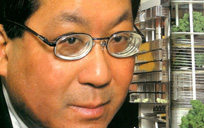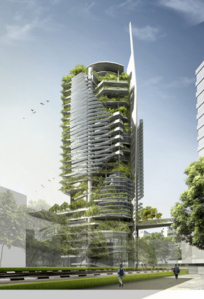Elma Durmisevic
Michael McDonough
Ton Venhoeven
Ahmet Hadrovic
Michael Braungart
Marcel Vroom
Wim Poelman
Rudi Daelmans
Martin Smit
Nirvana Pistoljevic
Natasa Perkovic
Sanja Durmisevic
Miriam Losse
Jan Brouwer
Martin Wollensak
Thomas Bednar
Maarten Dansen
Jaap Wiedenhoff
Adnan Pasic
Ivan Straus
Job Roos
Boran Pikula
Dzenana Bijedic
Haris Hadzialic
Ejub Dzaferovic
Almedina Hadzic
Alisa Grabus
Sanela Klaric
Azra Korjenic
Ken Yeang
Dushko Bogunovich
Michael McDonough
Ton Venhoeven
Ahmet Hadrovic
Michael Braungart
Marcel Vroom
Wim Poelman
Rudi Daelmans
Martin Smit
Nirvana Pistoljevic
Natasa Perkovic
Sanja Durmisevic
Miriam Losse
Jan Brouwer
Martin Wollensak
Thomas Bednar
Maarten Dansen
Jaap Wiedenhoff
Adnan Pasic
Ivan Straus
Job Roos
Boran Pikula
Dzenana Bijedic
Haris Hadzialic
Ejub Dzaferovic
Almedina Hadzic
Alisa Grabus
Sanela Klaric
Azra Korjenic
Ken Yeang
Dushko Bogunovich

Lecture:
Green design implementation
17:00h
Day eight, Saturday 17 September
Bošnjački institut, Sarajevo
KEN YEANG
D.M.P.N., PhD. (Cantab), AA Dip., D.Lit. (Hon.), APAM, FSIA, RIBA, ARAIA, Hon. FAIA, Hon. FRIAS, Plym Professor (University of Illinois), Adjunct Professor (University of Malaya), Adjunct Professor (University of Hawaii), Tongji University (Shanghai).
Dr. Ken Yeang is an architect-planner, ecologist and author who is best known for his signature and innovative green buildings and masterplans. He is regarded as one of the foremost designers and noted authority on ecologically-responsive architecture and planning. He has authored several books on ecological design and tall building design. His latest is, Ecodesign: Manual for Ecological Design, published by John Wiley & Sons (UK).
He has pioneered the passive low-energy design of tall buildings, which he calls the 'bioclimatic skyscraper'. He has received numerous awards for his work and designs that include the Aga Khan Award for Architecture, RAIA International Award, Prinz Claus Award, UIA August Perret Award. His key built works include the Menara Mesiniaga tower (Malaysia), the National Library (Singapore) Great Ormond Street Hospital Extension (UK).
He is an Honorary Fellow of the American Institute of Architects, past Chairman of ARCASIA and has served on the Royal Institute of Architects Council. He is the distinguished Plym Professor at the University of Illinois, and Adjunct Professors at the University of Hawaii and University of Malaya. He is a principal of the UK architect and planning firm, Llewelyn Davies Yeang and its sister company, Hamzah & Yeang (Malaysia).
Dr. Ken Yeang is an architect-planner, ecologist and author who is best known for his signature and innovative green buildings and masterplans. He is regarded as one of the foremost designers and noted authority on ecologically-responsive architecture and planning. He has authored several books on ecological design and tall building design. His latest is, Ecodesign: Manual for Ecological Design, published by John Wiley & Sons (UK).
He has pioneered the passive low-energy design of tall buildings, which he calls the 'bioclimatic skyscraper'. He has received numerous awards for his work and designs that include the Aga Khan Award for Architecture, RAIA International Award, Prinz Claus Award, UIA August Perret Award. His key built works include the Menara Mesiniaga tower (Malaysia), the National Library (Singapore) Great Ormond Street Hospital Extension (UK).
He is an Honorary Fellow of the American Institute of Architects, past Chairman of ARCASIA and has served on the Royal Institute of Architects Council. He is the distinguished Plym Professor at the University of Illinois, and Adjunct Professors at the University of Hawaii and University of Malaya. He is a principal of the UK architect and planning firm, Llewelyn Davies Yeang and its sister company, Hamzah & Yeang (Malaysia).
The lecture discusses ecological design or ecodesign and its implementation. The contention is that ecodesign is not just about buildingdesign, but encompasses everything that we as humans make or do on the natural environment. It involves the seamless and benign biointegration of the artificial with the natural at three levels: physically, systemically and temporally. Achieving this successfully and comprehensively is thus the challenge. Biointegration is regarded here as similar to surgical integration in prosthesis design. The paper discusses each of these aspects of biointegration, through a number of design and technical examples. Ecodesign is regarded here as very much still in its infancy – the truly green building is still to be achieved as there are many aspects technically, theoretically and in design application that remain to be resolved. The approach here is based on the principals of ecology, and suggests that solutions might be derived from imitating the properties, structure and processes of ecosystems as an "ecomimesis".

© 2011 SARAJEVO GREEN DESIGN FESTIVAL
